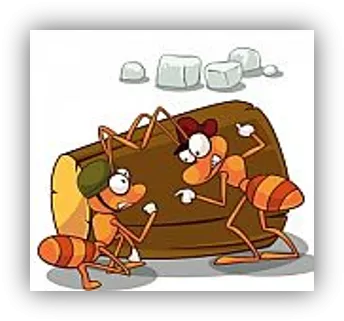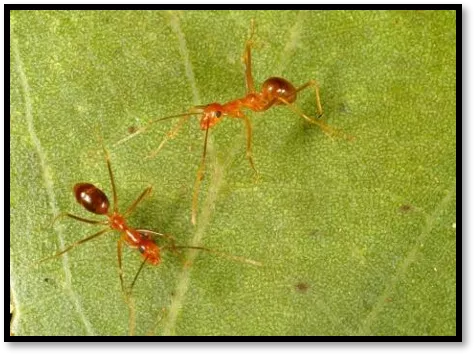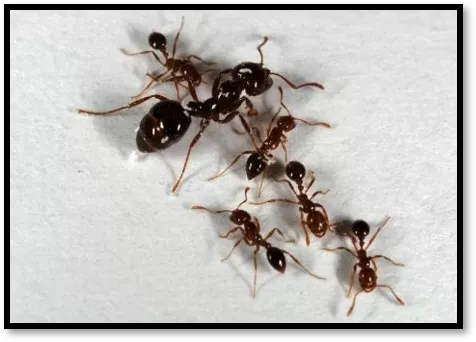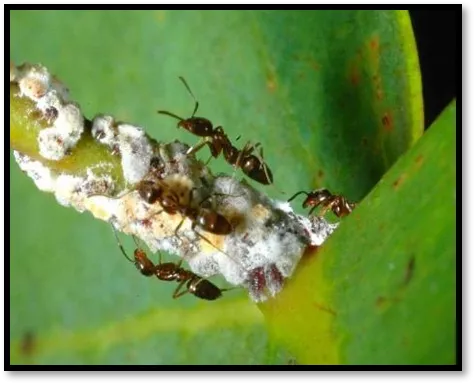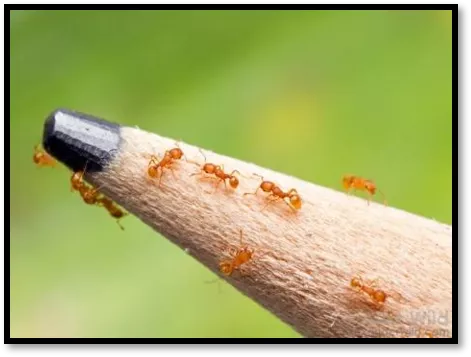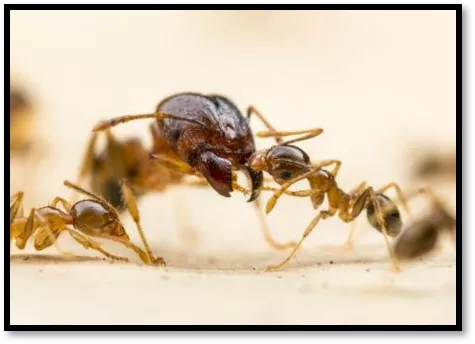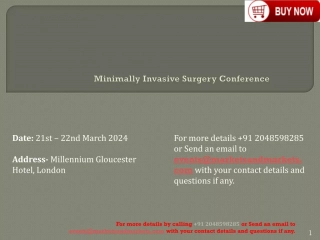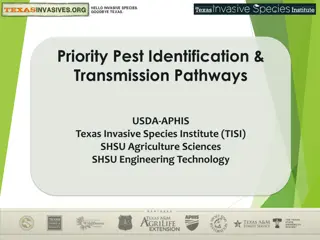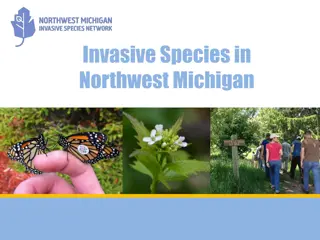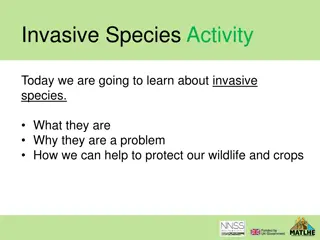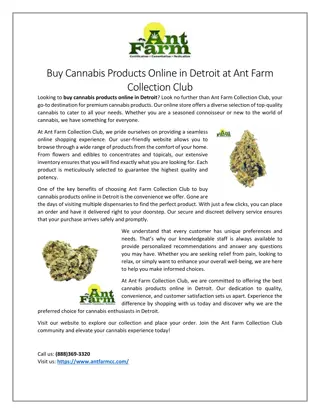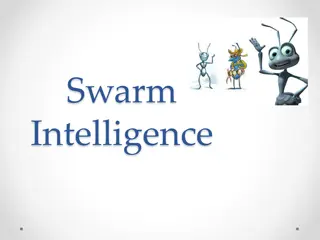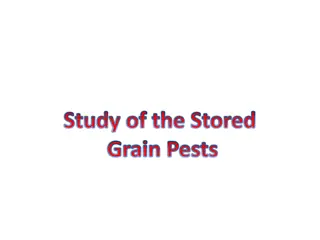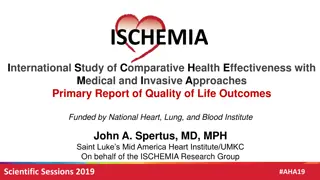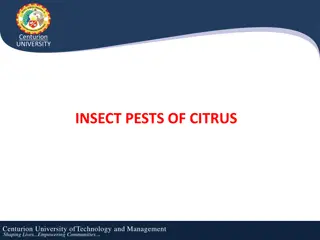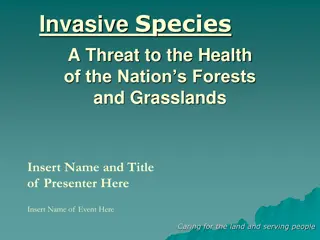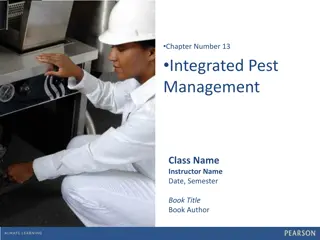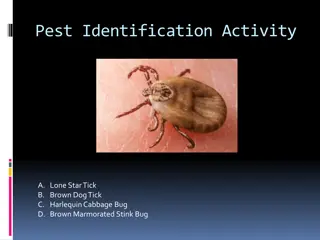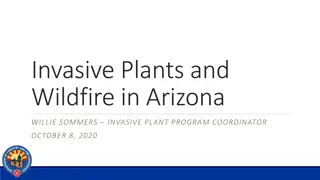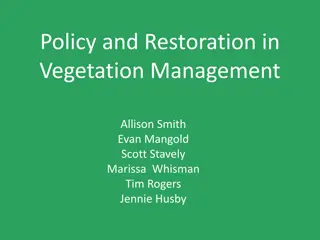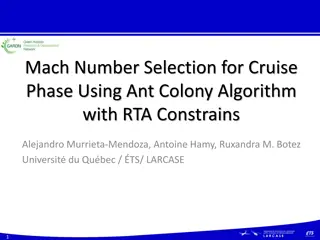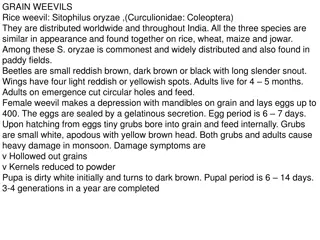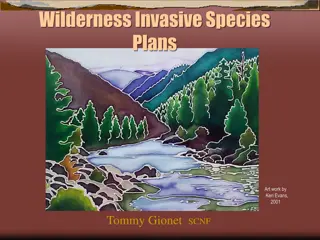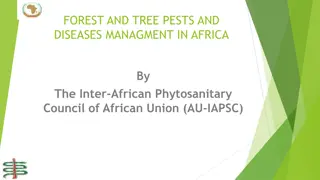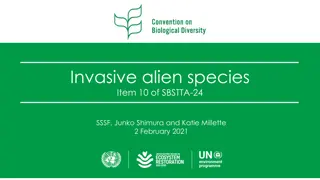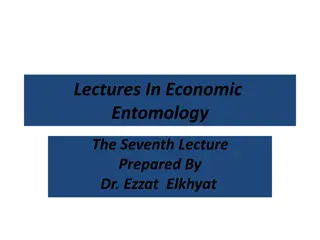Exploring the Top 5 Invasive Ant Pests in the Pacific
Discover the top 5 invasive ant species affecting agriculture and the environment in the Pacific: African big-headed ant, Red imported fire ant, Little fire ant, Argentine ant, and Yellow crazy ant. Explore their impact on people, agriculture, and the natural ecosystem, and learn about their life cycle and colony structure. Engage in educational activities like discussing the ants' effects on society, agriculture, and the environment, and go on an ant hunt to observe these creatures in action.
Download Presentation

Please find below an Image/Link to download the presentation.
The content on the website is provided AS IS for your information and personal use only. It may not be sold, licensed, or shared on other websites without obtaining consent from the author.If you encounter any issues during the download, it is possible that the publisher has removed the file from their server.
You are allowed to download the files provided on this website for personal or commercial use, subject to the condition that they are used lawfully. All files are the property of their respective owners.
The content on the website is provided AS IS for your information and personal use only. It may not be sold, licensed, or shared on other websites without obtaining consent from the author.
E N D
Presentation Transcript
THE WORST INVASIVE ANTS IN THE PACIFIC
What are we going to learn today? 1) What are the top five invasive ant pests, the problems they agriculture and the natural environment. cause people, 2) Learn about the life cycle and structure of their colony. Image courtesy of TAW4 at FreeDigitalPhotos.net
Lets recap In our previous lesson, we 1) learnt that an ant is a living thing. 2) learnt that not all ants are invasive. 3) discussed the positive and negative impacts of ants on our environment. Image courtesy of TAW4 at FreeDigitalPhotos.net
The five WORST invasive ANTS in the Pacific African big-headed ant Red imported fire ant Little fire ant Argentine ant Yellow crazy ant You can t tell just by looking at these five ant species that they cause worse problems than any other ants
The five WORST invasive ANTS in the Pacific African big-headed ant Red imported fire ant Little fire ant Argentine ant Yellow crazy ant
Video on Fire Ants by SPREP Video on Fire Ants by SPREP
Activity 1 Discuss the icons and their effects for each of the ant species. What do you think their impacts are on: People Agriculture Environment Record your discussion on a mind map. Image courtesy of AKARAKINGDOMS at FreeDigitalPhotos.net
Ant life cycle Ants go through a number of different stages from egg to adult. They have a 4 stage life-cycle just like the butterfly! One or more queens lay eggs that develop into new workers, queens and males.
Ant hunt! We are going to hunt for ants now! This is an opportunity to go on the look out for ants. Some simple rules to remember: 1) Always take care of one another. 2) Take care not to damage any other parts of nature. 3) If in doubt, always ask the teacher. 4) Be back to the classroom on time. Image courtesy of TAW4 at FreeDigitalPhotos.net
Activity 2 1) Have a look for some ants outside. 2) Follow them back to their nest. 3) Dig up the nest (make sure the ants don t sting or bite first though)! 4) Count up the number of different life stages in the nest. Ask yourselves these questions: 1) Can you see workers? Are there any queens? 2) Do any of the ants have wings? 3) Can you tell apart the workers from the queens? 4) Can you see eggs, larvae and pupae?
What we have learnt today There are 5 worst invasive ants in the pacific. Collectively, they bite, spray acid, sting, harm crops, harm people and harm wildlife. The ant goes through a 4 stage life-cycle similar to a butterfly. Ants are social creatures and they live in colonies where they have specific roles Image courtesy of TAW4 at FreeDigitalPhotos.net
Share with your family today! We had an exciting day today! Can you go back home and share at least 2 ways the invasive ants are harmful? You can use the red icons to help guide your sharing! Image courtesy of AKARAKINGDOMS at FreeDigitalPhotos.net
See you next time! Image courtesy of arztsamui at FreeDigitalPhotos.net






